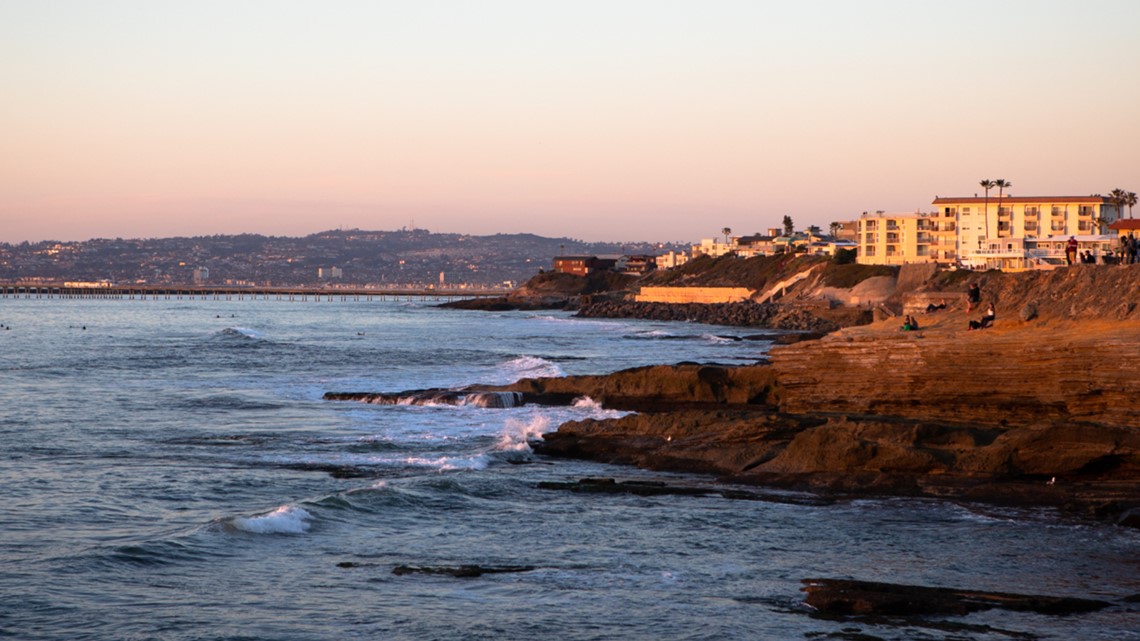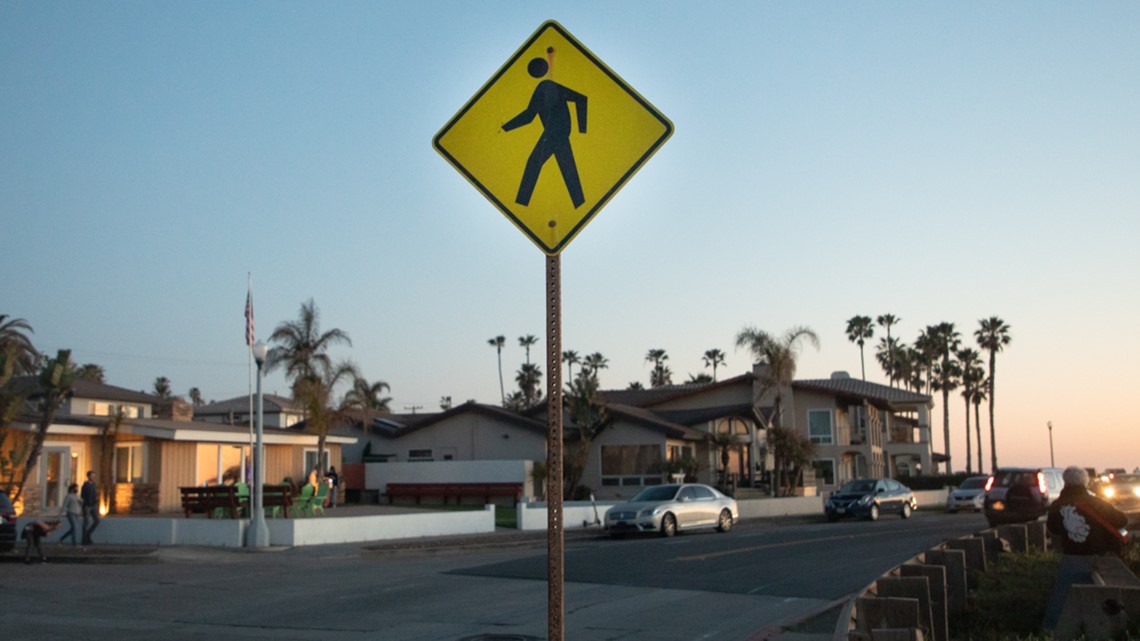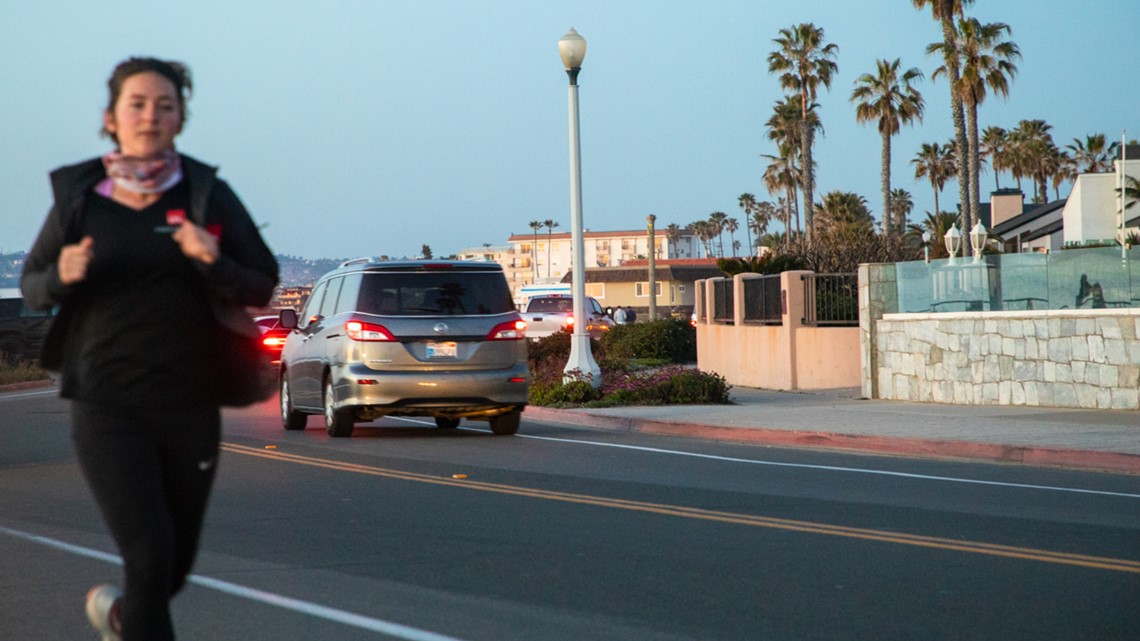SAN DIEGO — The San Diego City Council was told last month it needs to spend nearly $264 million over the next five years to install new streetlights, make electrical updates, and replace aging poles and fixtures.
That’s an average of $52.7 million annually – a whopping 6,000% increase over the $864,000 being spent this fiscal year.
Councilmember Joe LaCava, vice chair of the council’s infrastructure committee, said he knows the city won’t have that kind of money to spend on streetlights.
Even if city voters would approve a tax or fee increase, which he views as needed, it wouldn’t cover the funding gap, LaCava said.
“This is just one element of the infrastructure picture in our city that has some really very daunting numbers,” he said.
LaCava said the streetlight problems are so vast that the number is, almost unbelievably, an undercount. He said it does not account for emergencies or the full scope of the deficit. Ongoing streetlight maintenance costs are also not included.
None of this can be comforting to San Diego residents who have struggled to get prompt streetlight repairs. Examples residents have told inewsource about:
- Trying for more than a year to get neighborhood lights repaired.
- Reports of problems to the city’s Get It Done app that say “in process” over six months after they were reported.
- Streetlights that never turn off, unnecessarily using electricity during the day.
The Transportation and Stormwater Department, which is responsible for streetlights, knows residents are irritated by repair delays and knows the solutions aren’t easy.
Aging infrastructure, staffing challenges due to COVID-19 and the sometimes complex nature of fixing streetlights are all creating challenges, a department spokesperson said.
Officials say about 8% of the city’s 54,000 streetlights have open service notifications and are in need of repairs.
Problems playing out across the city
A recent inewsource analysis found more than 5,000 streetlight complaints citywide from September through January. Downtown, Point Loma and Pacific Beach were the neighborhoods with the most complaints.
Along Sunset Cliffs Boulevard south of Ocean Beach, a row of broken streetlights are sandwiched between the crashing waves of the Pacific Ocean and waterfront homes perched on the coast.


Residents say the lights, spread along a popular sidewalk that offers one of the best ocean views in the county, have been out for months and are causing serious safety concerns. Tourists and locals gather in the area daily to enjoy the coastline and watch the sunset, many parking on the street and dashing across the two-lane road to sit near the water.
A visit last week found eight streetlights that didn’t turn on once it got dark. One of them was a streetlight pole with no light on top of it. A neighbor said it had blown off during a recent wind storm and his fix-it requests to the city have gone unanswered.
Mary Masey-Ayub, 68, said she’s submitted 20 repair requests to the city in about 14 months, and she’s worried her street – Sunset Cliffs Boulevard – is so dark at night that a car could collide with a pedestrian.
The problem is maddening, she said, especially when just a few blocks away some streetlights stay on 24 hours a day.
“It's ridiculous when we're paying our taxes, and we need to be supported in our community to have streetlights that protect our community,” Masey-Ayub said.
Once the pandemic started last March, she said, “the cliffs got inundated day, morning, noon and night” with people, compounding safety issues.
Point Loma resident Fatima Rasnik, 65, said she and her husband come to Sunset Cliffs frequently to enjoy evening walks, finding it a welcome retreat during the pandemic.


“There have been a few nights when my husband and I have come and walked, and we did notice how much darker it is and that there are fewer streetlights,” Rasnik said. But they are vigilant, she said, and feel safe.
“The environment is such that you don't feel like there are any blinded areas,” she said.
In Mira Mesa, Daniel Richardson told inewsource about a streetlight that has been out in his neighborhood for about a year, despite several reports to the city by himself and neighbors.
The broken light is on the north side of Woodlawn Drive at the end of Glenellen Lane, Richardson said.
Three requests to fix it on the city’s Get It Done app, the earliest submitted in August, are still listed as “in process.” Richardson said the delay is unusual. When the light has gone out in the past, he said, the city fixed it fairly promptly.
He said he knows his neighbors view the broken light as a security issue, but he’s not personally bothered by it.
“I particularly like a dark sky and like to look at stars and things of that nature, but other people like to light up the night and they feel safer if things are lit up,” Richardson said.
Fixes are expensive and complicated
Often, streetlight repairs are not as simple as changing light bulbs.
“There is a diagnostic process, and then also the wiring’s underground,” said Anthony Santacroce, a Transportation and Stormwater Department spokesperson. “There's a lot of variables associated with fixing streetlights, so that really adds to the length of it and furthermore adds to the confusion.”
When one light goes out, extensive repairs could be needed, he said. That’s because many of the city’s lights exist on circuits and have underground wiring. Much like a string of Christmas tree lights, when one goes out the entire series of lights could need to be fixed.
When that happens, the solutions become complex and could take as long as road reconstruction or pipe replacement, Santacroce said.
Engineering, design, permits, staff time and funding issues all come into play. Streetlight repair costs also have been rising. The report published last month noted the average cost to install new streetlights is up from $25,000 per pole to $44,000.


Fixes have been slow in part due to staffing challenges, which have been significant during the pandemic, Santacroce said. About one in six city employees has had to miss work because they had COVID-19 or had to quarantine, according to city data provided last month, leaving many departments that handle city services short-staffed.
The city has 28 full-time streetlight positions. Of that, the department has five openings for electricians and one equipment operator opening. Another two positions are filled by employees with injuries, leaving just 20 staffers working full schedules.
Retirements, time off due to the pandemic and retention problems have all affected the team, Santacroce said. The city has also lost some streetlight workers to other agencies that pay higher salaries, he said.
It’s not just streetlights
Streetlight repairs are among several city services that have struggled during the pandemic, though many of the problems began long before the virus took hold.
The city is facing a $2.3 billion infrastructure funding gap over the next five years, a number that’s been climbing ever higher in recent years as the city’s pipes, electrical wiring and roads get older and older.
Adding to the city’s challenges are projects that pop up and require immediate repairs, which steals money away from other needs such as streetlights, said Jillian Kissee with the Office of the Independent Budget Analyst. When the city’s drainage system fails, for example, it must be fixed.
Stormwater costs have been staggering. The funding gap is estimated at $1.27 billion over the next five years. In late January, City Council members announced they’re exploring a November 2022 ballot measure that would raise taxes or fees to increase funding for flood prevention.
Kissee said her office knows a very limited amount of money is available to address a variety of problems.
“We need so much in just one given year,” she said. Costs also can snowball as infrastructure ages and becomes more expensive to replace.
“Those needs don't go away,” she said. “They just kind of pile on for the next year and the next year.”
inewsource investigative data reporter Jill Castellano contributed to this story.
inewsource is a nonprofit, independently funded newsroom that produces impactful investigative and accountability journalism in San Diego County. Learn more at inewsource.org.



